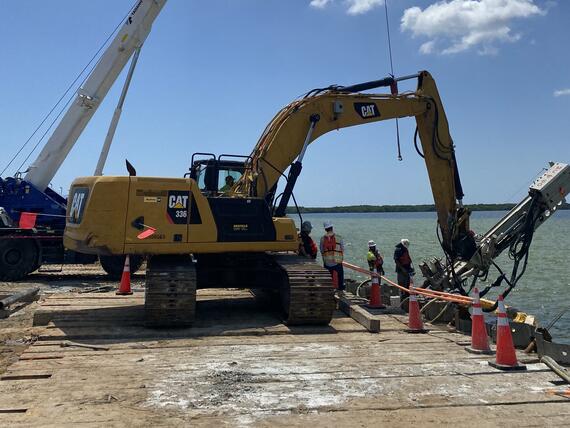Since 1959, the Howard Frankland Bridge has connected Tampa and St. Petersburg, carrying traffic across Tampa Bay. Expansions and widening projects have occurred since the 1990s, and the most recent Florida Department of Transportation megaproject expands the bridge once more.

The project
The expansion includes the construction of a new bridge eight lanes wide, including four southbound lanes, four bidirectional express lanes, and a bike/pedestrian lane. Before they could begin bridge construction, the shoreline along Tampa Bay needed to be built up to accommodate the new causeway and bridge approach ramps. The expansion infill was supported by driven sheet pile and combi-wall bulkheads. Keller was contracted to design and install permanent soil anchors to support the bulkheads.
The challenge
Most of the anchor installation was conducted from barges adjacent to the bulkhead walls. However, tidal fluctuations and existing structures impeded barge-based installation in several locations. In these locations, the anchors required landside installation.
The solution
Soil conditions comprised loose to dense sands underlain by clay over karstic limestone, with approximately 100-ft variation in limestone depth in some areas. Anchors were designed to bond with the limestone, and Keller used CAD modeling to best determine anchor lengths. In some cases, anchors reached 213 ft in length.
In total, 1287 anchors were installed at various angles to avoid conflicts with already installed foundation structures. Through 3-D mapping and coordination with the general contractor, Keller was able to accommodate anchor modifications with a minor impact on the project schedule.
